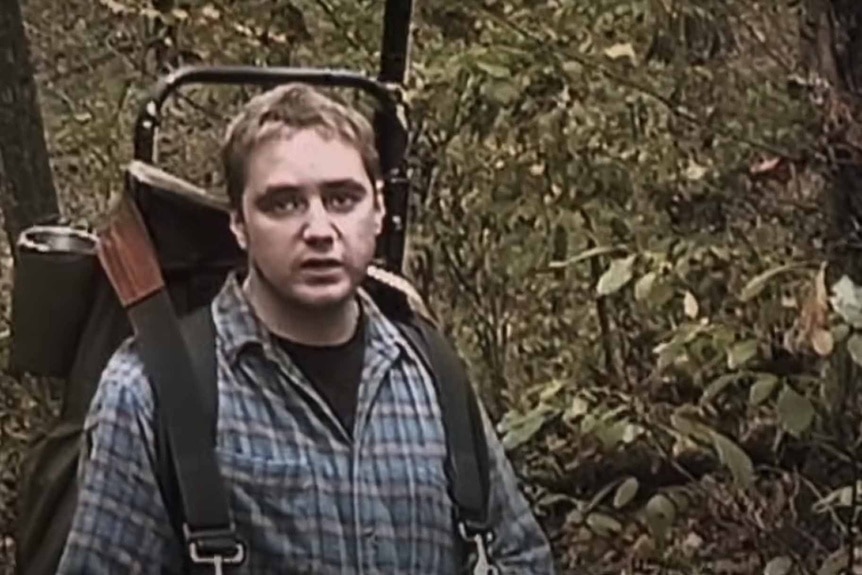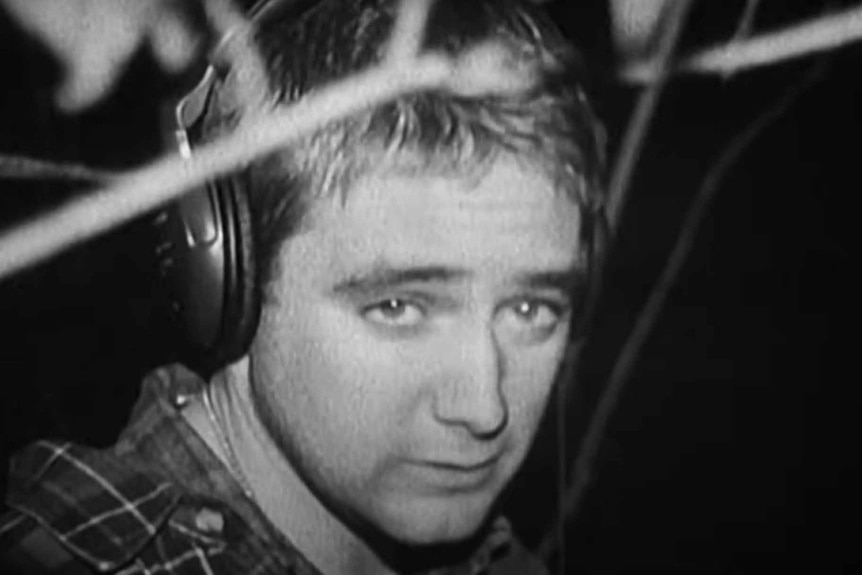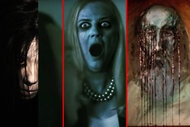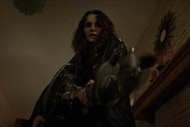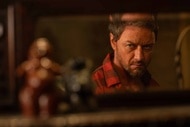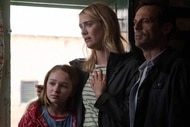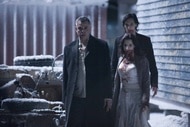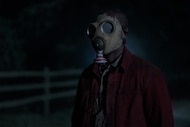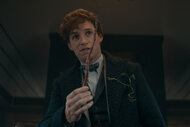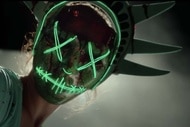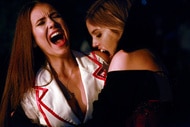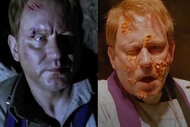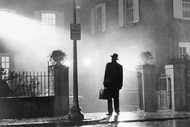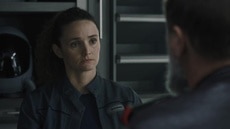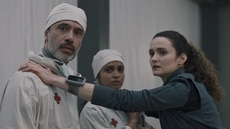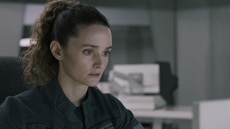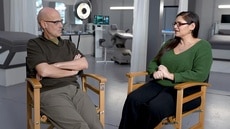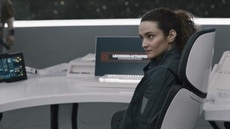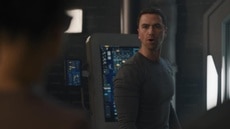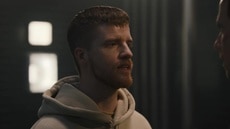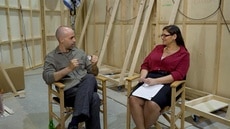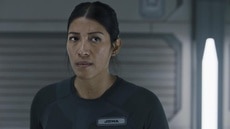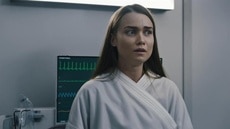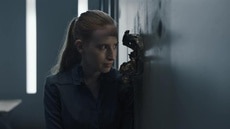Create a free profile to get unlimited access to exclusive videos, sweepstakes, and more!
25 Years Later, The Blair Witch Project Is Still a Deeply Unsettling Horror Film
The Blair Witch Project turned 25 this year, so let's take a closer look at what makes it so enduringly scary.
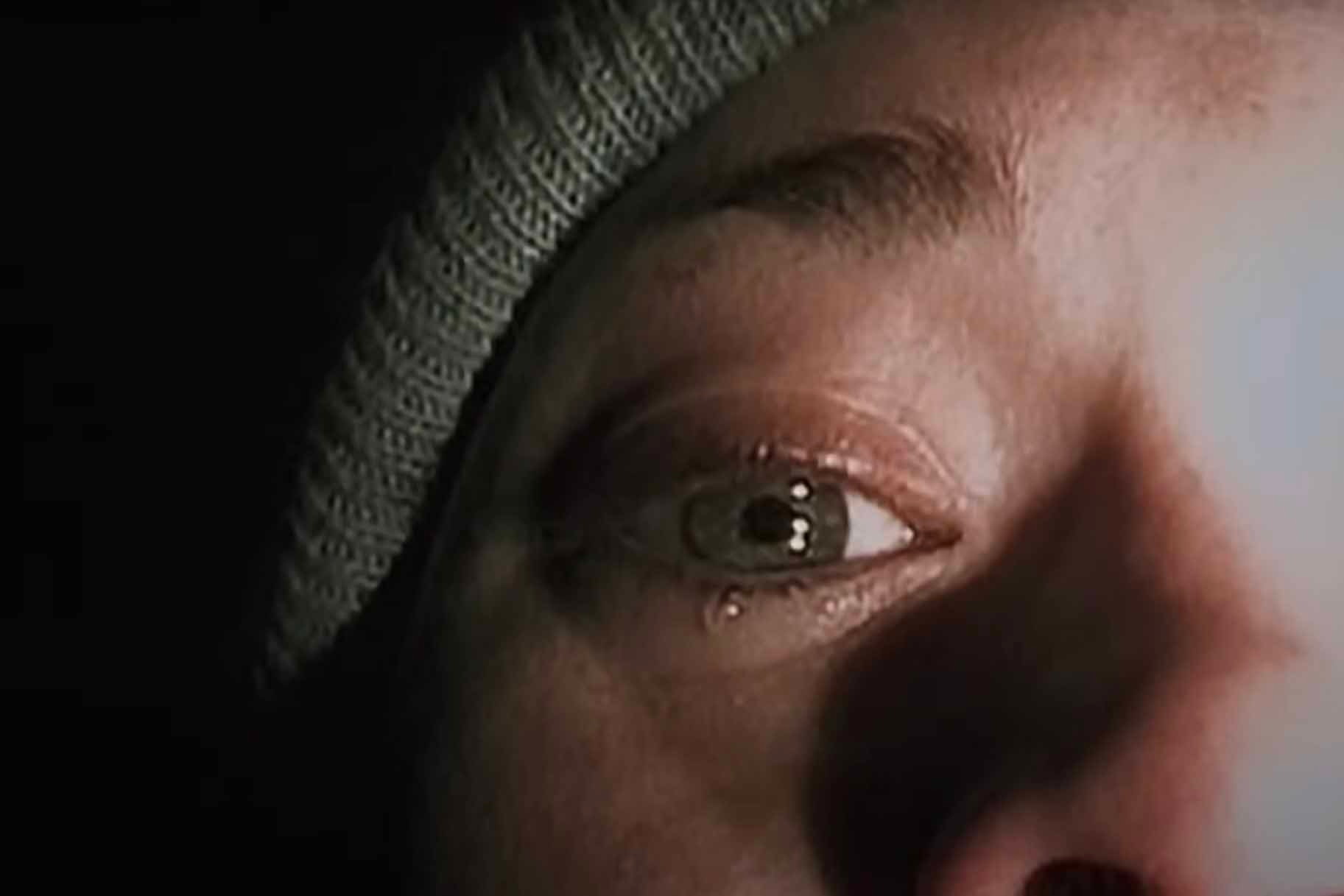
Back in 1999, The Blair Witch Project was everywhere.
Whether you saw the film or not –– and a lot of people saw the film –– you could not escape the found footage hit from directors Daniel Myrick and Eduardo Sanchez. Posters were everywhere, ads were all over TV, and even the "dossier" that purportedly detailed the case was on shelves in every bookstore. Then of course, there were all the people talking about the movie, from theatergoers in the concession lines to talk show hosts to your friends at school who'd watched it over the weekend. The spell it cast was vast and potent, so it's no wonder that there was inevitable backlash.
While it's arguably more prevalent than ever right now, there's always been a particular subcurrent in our culture about horror films, one that says the best way to watch a scary movie is to attempt to beat it, poke holes in it, prove that it's not actually scary to you, the superior viewer. The Blair Witch Project, with its understated story and lack of major monster moments, was perfect fodder for this mindset, and while it drew plenty of fans, there were also those naysayers who wanted to tell you "nothing happens" or "it's not that scary" or "this movie is just boring." That conflict persisted into the film's home video release, and it persists now, a quarter-century later.
But The Blair Witch Project has always been about more than this debate over how well its less-is-more approach works in terms of delivering scares. Looking back at the film now, there's an enduring dread that hangs over its brisk 82-minute runtime, a dread so heavy that, if you feel it, you'll still be left locked in the film's dark spell. And for proof, you can go stream it on Peacock right now.
The Familiar Roots of The Blair Witch Project
You know the story of this film, even if you've never seen it, because it was everywhere for years and because it's wonderfully simple. Three student filmmakers –– Heather (Heather Donahue), Josh (Joshua Leonard) and Mike (Michael Williams) –– head into the Maryland woods for what's supposed to be a weekend, shooting a documentary directed by Heather about a local witchcraft legend. They never come out of the woods, and a year later their footage is discovered. The film we're watching is purportedly the story of what happened to these real students.
With that premise in place, everything starts very simply. We see the trio shopping for groceries, buying the requisite marshmallows to roast over the fire. We see them wandering around the town of Burkittsville, asking locals about the Blair Witch legend, sometimes getting good material and sometimes getting nonsense, laughing about the weirdos they encounter. We see them struggling with their packs as they head into the woods, and even get to see Heather record an uneventful segment of narration about a piece of the legend.
These scenes are vital, not just because they conjure up visions of 1990s youths going on a camcorder-driven adventure in the woods (something a lot of us can relate to), but because they remind us of the kinds of often-ambiguous paranormal "documentaries" we grew up watching. As with those old-school docs, we get the sense watching the early scenes of The Blair Witch Project that Heather, Josh, and Mike don't necessarily believe what they're documenting, despite the seriousness of Heather's narration. They're just playing with myths, not really buying into them, more interested in telling a good story than in getting into the truth. There's a playfulness and a slight artifice to it all, something that helps to dial up the terror of the film's later chapters, as that artifice falls away.
How The Blair Witch Project leans into the simple terror of being lost
The deeper the trio ventures into the woods, the more strange sights and sounds torment them. Cairns of rocks appear beside their campsite, strange wooden figures hang from the trees, banging noises and the sounds of children laughing torment them by night. Clearly, some force has latched onto them and won't leave them alone, but that's not the most frightening part of the journey.
To be clear, the strange occurrences in the woods are frightening, particularly the night when the children seemingly descend on the tent and drive them out into the trees, and the film does a wonderful job of continuing to ratchet up that tension. The idea that nothing happens in these moments is dismissive of the kind of suggestive terror the film builds, but there's a more existential layer to this too.
Midway through the film, when it first occurs to the trio that they might be getting lost, Heather makes an observation: They're in America, not far from towns and roads and the trappings of ordinary civilization, which means they can't be truly lost, and even if they are, they can't stay lost. Later, when they realize they're going around in circles and have lost their map, Heather repeats a version of the same idea, screaming "This is America!" in a way that suggests a pleading prayer.
The idea of getting lost in the civilized world is a terrifying, existential one unto itself, something that would be hard for any of us to grasp until we were truly in that moment. But then The Blair Witch Project takes it just a little deeper, in a scene of peak tension when Josh, having taken Heather's camcorder, remarks that he understands why she refuses to stop filming them. The camera, he tells her, is "not quite reality." It's a slight remove, a chance for her to retreat into the mode of observer, however tenuously, and pull away from their situation.
These two ideas, Heather's observation about America and Josh's about the camera, create a darker layer of fear within the film. These are people who believe they understand objective reality, but they're also people out in the woods trying to make a documentary about a story that may or may not be true. The very act of attempting to make their film with sincerity, even if they don't believe the story, places them in a certain liminality, and that liminality is furthered by the characters' observations. Josh understands that the camera lens adds a layer of liminality itself, while Heather understands that they should be on a kind of border between civilization and wilderness, and that border should be easily penetrable. Instead, they're stuck in-between, unable to break free of the woods even though they know exactly where they are on a map of Maryland. They are trapped in a limbo, a loop that won't end, and that's more terrifying than any sound going bump into the night.
A Remarkable Exercise in Craft
While Myrick, Sanchez, and the rest of their crew certainly deserve a lot of credit for the film's success, The Blair Witch Project lives and dies by the talents of its principal cast. Donahue, Leonard, and Williams have to operate all of the filmmaking equipment, improvise dialogue, and try wringing genuine emotion out of an engineered situation, and they do it remarkably well, capturing everything from happy accidents to moments of fear that seem truly earnest. But the crown jewel in their achievements is, without question, the film's final scene.
It's one of the most famous scenes in modern horror, one that's been parodied and picked apart for years. With Josh missing, crying out for help from somewhere they can't see, Heather and Mike go looking for him and find an old house in the middle of the woods. They go inside to keep looking, Heather operating the black-and-white 16-millimeter film camera they used for the documentary, and Mike operating the camcorder they used for everything else. Their sound recording system was left behind, which means the only means of capturing sound is the mic on the camcorder.
Together, Heather and Mike comb the house, pulled this way and that by Josh's shouting, sometimes moving together, sometimes moving separately as they try different floors, different rooms. Because they keep separating, but they're both within the confines of a small house, we can hear them both thanks to the camcorder, but sometimes Heather is farther away, creating an eerie effect as her voice grows fainter, then sharper.
This culminates in the final shot, in which Heather finds Mike in the house's basement, standing in the corner, his camcorder knocked to the ground by an unseen force. Because Heather, like us, has paid attention to the lore of the story, she knows exactly what this means. This is what happens right before someone dies. Heather's screams grow progressively louder throughout the film's final seconds, building from an eerie, echoing wail to a fever pitch of terror as she walks closer and closer to the camcorder, then finally meets her end when she's also grabbed by this unseen force.
It's a remarkably piece of sound design, accidental or not, and it only adds to the idea that these people are trapped in a reality that's not the one they remember, that their world has been altered in ways that keep them in a perpetual limbo that only ends with their deaths. It's masterful, frightening, and proof that this film has lost none of its power after 25 years.
The Blair Witch Project is now streaming on Peacock.
